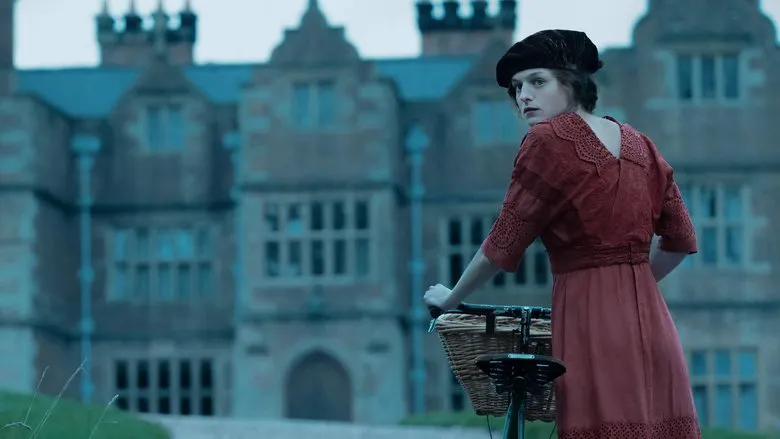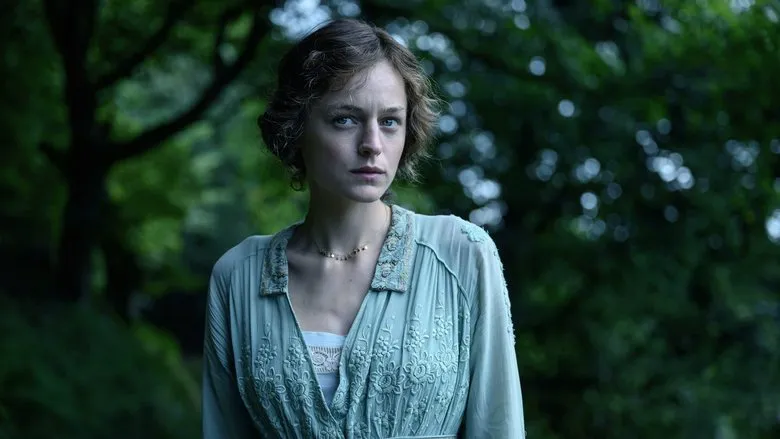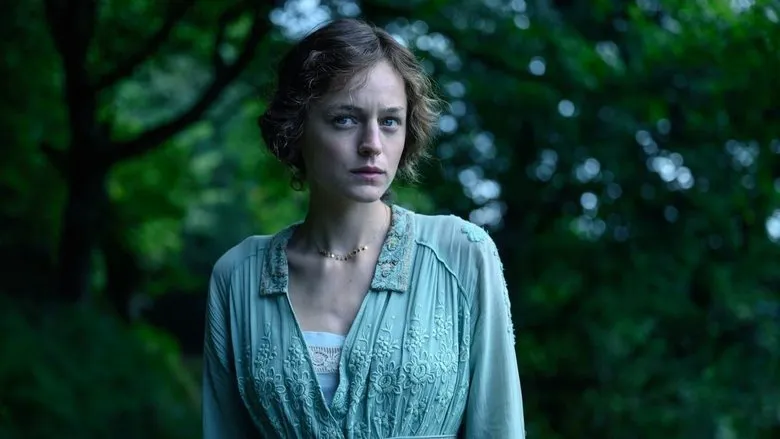The Enduring Controversy and Profound Commentary of “Lady Chatterley’s Lover”
D.H. Lawrence’s “Lady Chatterley’s Lover” has long been a subject of intense debate, primarily due to its explicit content. Upon its release, many critics condemned the novel’s descriptions as overtly graphic and morally reprehensible, leading to its ban until 1960.

However, to focus solely on the explicit scenes is to overlook Lawrence’s deeper intentions. “Lady Chatterley’s Lover” is far more than mere titillation. Through his detailed and intimate portrayals, Lawrence delves into the complexities of human nature, offering a critique of the dehumanizing effects of the Industrial Revolution and World War I. He invites us to explore the profound need for connection that underlies human existence, advocating for a return to honesty and vitality in a world that often prioritizes superficiality.
Unraveling the Narrative: A Tale of Four Souls
What is “Lady Chatterley’s Lover” truly about? What story does it tell, and what are the underlying meanings it seeks to convey? Let’s unpack the narrative and explore its core themes.
The novel revolves around the intertwined lives of four key characters: Sir Clifford Chatterley, a baronet left paralyzed by the war; his beautiful and refined wife, Lady Constance (Connie); Michaelis, a writer whose charm masks a deep emptiness; and Mellors, the gamekeeper who seeks solace in the forest, disillusioned with modern society.
The Chatterleys: A Marriage Scarred by War and Implication
Sir Clifford Chatterley, a man of noble birth and Cambridge education, served as an army officer. He married Connie, a woman of beauty, intelligence, and artistic sensibility. Their idyllic life was shattered by World War I, which left Clifford with a severe spinal injury, rendering him paralyzed and impotent.

Following the war, they retreat to Clifford’s family estate in the Midlands, a rural setting that only accentuates the growing divide between them. Despite his physical limitations, Clifford clings to his aristocratic demeanor, masking the profound inner void that consumes him.
A Life Deprived of Intimacy and Connection
Clifford deteriorates into a mere shell of a man, unable to find meaning or purpose beyond intellectual pursuits. This proves devastating for Connie, who is denied physical intimacy and emotional connection, slowly withering within the confines of a sexless marriage.
Clifford relentlessly indoctrinates Connie with the idea that love is merely a trivial obligation within marriage, and that physical intimacy is nothing more than a base act. He even goes so far as to suggest that Connie bear a child with another man to secure the family line, referring to the child as a mere “thing,” prioritizing lineage over genuine emotional connection. In his eyes, Connie is reduced to a tool for the preservation of his legacy.
Further, Clifford embodies the cold-hearted capitalist, viewing his miners as instruments of profit rather than human beings, He sees himself as their natural ruler, entitled to their subservience and labor. To Clifford, his workers are no more than animals, existing solely to generate wealth for his benefit. His detachment highlights the dehumanizing impact of industrial society.
Connie’s Despair: A Search for Solace
Initially, Connie succumbs to Clifford’s manipulative rhetoric, embracing a life of purported intellectual purity. But as a healthy woman, her suppressed desires lead to severe depression. Her family, recognizing the root cause of her unhappiness, encourages her to seek a lover to alleviate her suffering.

Connie chooses Michaelis, a writer, as her lover, but their relationship lacks genuine emotional connection. This takes Connie from a purely intellectual relationship to a purely physical one, resulting in profound despair. Clifford’s dehumanization of his wife mirrors the disregard that Connie experiences in Michaelis, who, despite his polished exterior, is equally self-absorbed. He completely ignores Connie’s feelings and even blames her for failing to satisfy his desires.
Clifford and his circle of friends uphold a view of platonic love, seeing marriage as sacrosanct. Clifford seeks only to control Connie’s freedom, trapping her in a monotonous existence. Lawrence deliberately portrays characters such as Clifford and Michaelis to challenge the repression of sexuality in modern society.
Mellors: A Return to Nature and Vitality
In “Lady Chatterley’s Lover,” Mellors represents Lawrence’s ideal of masculinity: independent, vital, honest, and selfless. He embodies the sacred power of new life. Born into a working-class family and educated, Mellors could easily have joined the privileged ranks of the middle class.
However, he believes that the trappings of modern society would stifle his inherent vitality, so he chooses to become a gamekeeper, seeking refuge in nature to liberate himself. Mellors has also experienced emotional wounds in the past, and the women the women in his past represent platonic ideals of love which he now seeks to escape.
After leaving his family, he meets Connie. Witnessing a hen protecting her chicks evokes complex emotions within him, making him realize his own lack of vitality as he is haunted by the past. Mellors feels a newfound responsibility to protect Connie. He thought his desires were dead, but they suddenly reawaken.
Connie’s Journey of Self-Discovery and Freedom
Ultimately, Mellors bravely confronts his internal conflicts and unites with Connie. Before her marriage, Connie was a beautiful and vibrant woman.

After marrying, she moved with her husband to the mining district of Ragby in the Midlands, where she felt her life force was gradually drained. In this desolate existence, she seeks solace in affairs, yet these encounters are purely physical and devoid of true emotional connection.
This leaves her feeling empty until she crossed paths with men of status and wealth who are lifeless and impotent. Therefore, she longing to experience the beauty and vitality of the forest, escaping her current state of suffering.
It is then that Connie encounters Mellors, the gamekeeper. His vitality instantly captivates her. After leaving the forest, she undresses and examines herself in the mirror, realizing that her skin has lost its radiance and become rough. Witnessing her body gradually wasting away, she is forced to acknowledge that her life force is also fading.
The Awakening of Connie’s Senses and Soul
The novel features seven scenes that highlight Connie and Mellors intimate and budding relationship. In their first encounter in the depths of the forest, Connie’s consciousness awakens to the beauty and meaning of life. The second time, she is moved to tears as they emotionally and intimately connect. The third time, they respect, accept, and appreciate each other in nature’s loving embrace. As each passing moment unites them, their love grows, and Connie’s vitality is reborn as does her physical and emotional health

She realizes that she can no longer live without Mellors. Then defying societal norms, she abandons her status to boldly pursue her own desires, seeking her own paradise, and embodying the Adam and Eve of British society. Lawrence lived in the rapid industrialization of England and how the effects impacted its people. He felt how peoples lives we being affected on a personal life for work, leisure, and family. Along with the convenience, flaws were also taking effect.
Modern industrial civilization not only drastically impacted existing lifestyles but also distorted human nature and particularly sexual desire. Lawrence was acutely aware of the impact of industrial civilization on human desires. He believed that the relationship between men and women needed much needed adjustment. Advocating to awaken the dormant souls to bring forth human nature for rebirth.
Lawrence’s Vision: A Call for Harmony and Unity
Lawrence fully delivered on his artistic expectations, as he viewing the changing world, with its changes, and pursued his own path of human return. The boldness of his depictions in “Lady Chatterley’s Lover” he vehemently criticized a dismissive British society and harmed brought from the Industrial Revolution. Hoping to have established a respectful relationships amongst males and females.

Connie journey and self-liberation in the novel is greatly inspiring. A baroness leaving here former life behind; to achieve the unity, respect, and love to obtain what should be for the sexes should have, and for a women to be treated fairly, she resolutely chooses to be Mellors companion, no matter the consequences to be experienced for them. Although it may seem absurd or even a bit obscene, it actually shows the depths of rebellion for such an unfair world that both of the sexes have came to and been put into; a long calling for for self-liberation for women.
When Connie begins to recognize about what she indeed deserves, showing her such unstoppable strength with even unwavering courage. And what truly makes “Lady Chatterley’s Lover” as one of the greats with it current issues, is how much it carries over to how Lawrence raised and how his writing still influences greatly for generations of readers. For example, when using only in a utilitarian way, it only erodes human kindness, the never-ending pace makes for a difficult situation with reflection, because it has caused people a loss in what peaceful rural life can come with.
Lawrence own path is valuable and worth our attention in "Lady Chatterley’s Lover, as a balance is greatly needed to create, as a body can always create its need but to have the right mental mindset does even more, with mutual appreciation is just as important.